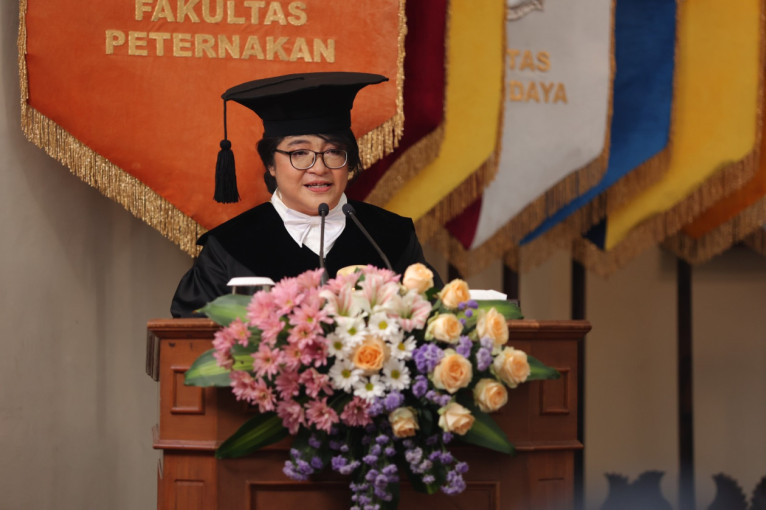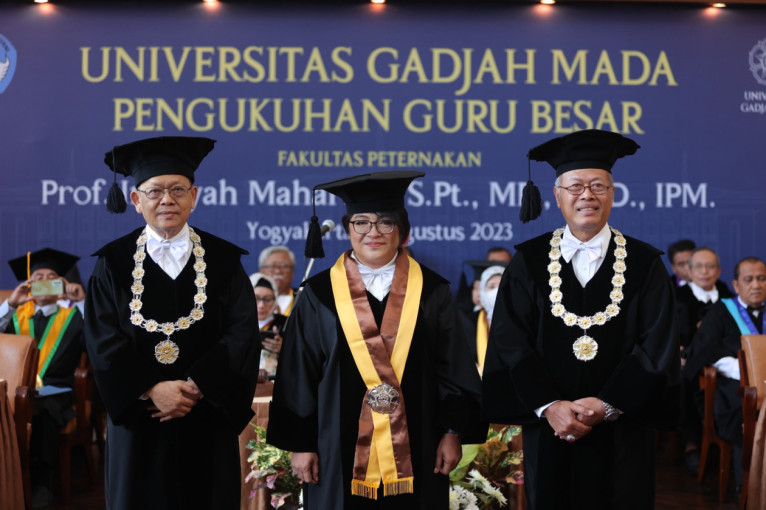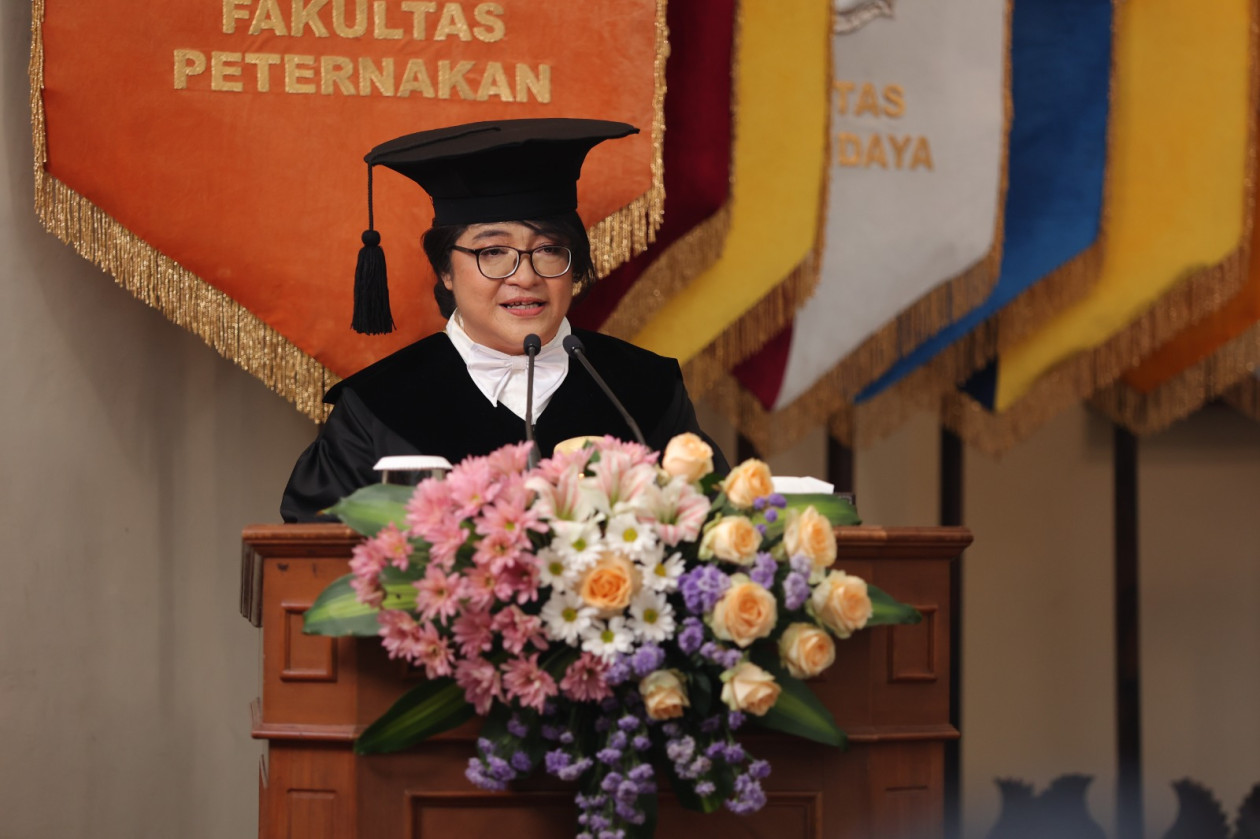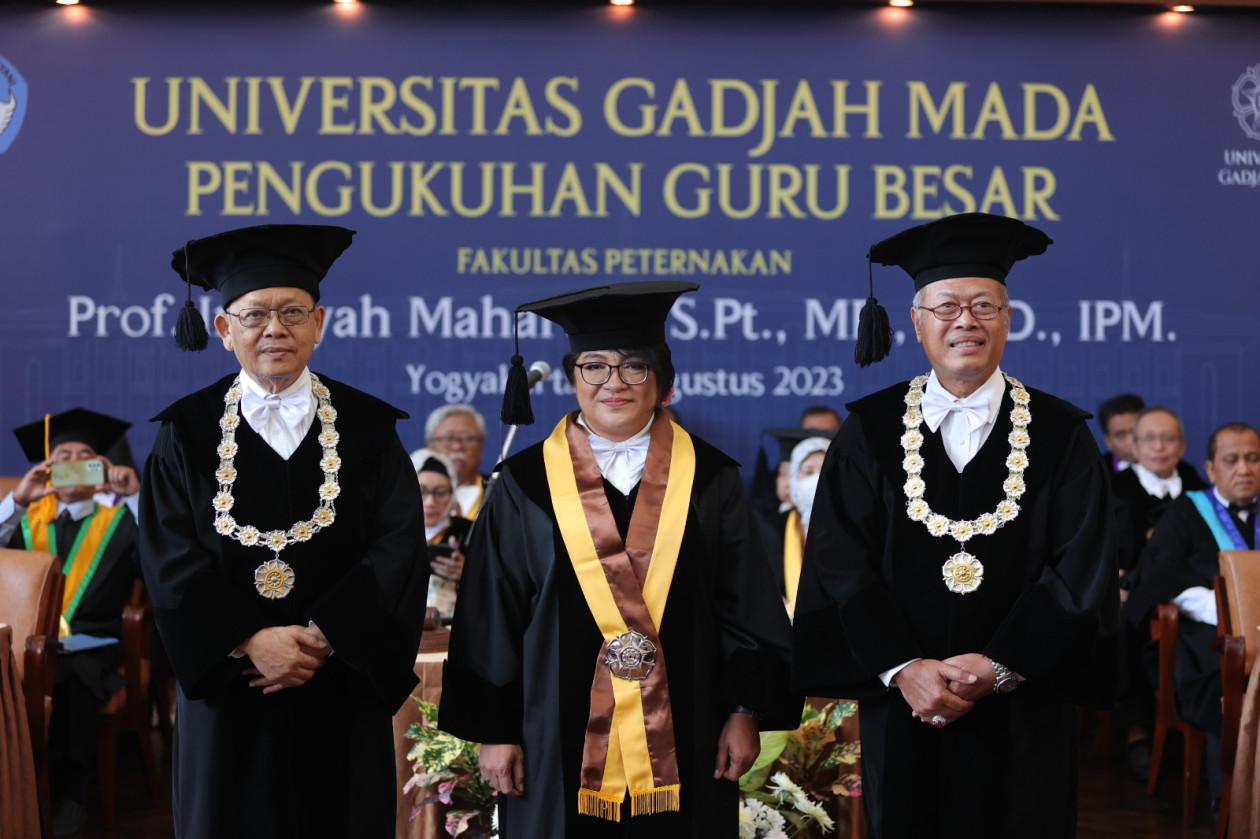Dr. Dyah Maharani from the UGM Faculty of Animal Sciences was inaugurated as a professor of animal breeding on Tuesday (August 15) at the UGM Senate Hall.
She is now one of the 399 active professors at UGM and one of the 19 active professors at the Faculty of Animal Sciences.
In her lecture titled “Breeding Models and Programs for Local Livestock in Indonesia,” Professor Maharani said the livestock sector is crucial to Indonesia’s economic contribution.
Additionally, its sub-sector enriches the nation’s intellect by supplying and providing animal-origin proteins. Animal protein needs can be met if livestock activities run smoothly and sustainably.
“Breeding is a crucial pillar in livestock activities. In order to obtain sustainable quality offspring, a breeding program is needed to ensure the genetic quality of the offspring produced,” she said.
One of the breeding models she discussed is the Corporate-Based Livestock Breeding Center (KSPT), a concept of an integrated and comprehensive agribusiness model focused on managing land and natural resources for the professional development of local livestock breeding.
This model can be established or applied by livestock associations or private companies in designated seed source areas specified by the government. These areas should have an agribusiness-based ecosystem close to the market or consumers.
A Community-Breeding Program (CBP) based breeding model is designed to organize breeding activities in villages or community livestock farms.
In this model, the breeding program is planned, designed, and executed by small-scale farmers individually or in collaboration with technical stakeholders to enhance the genetic quality of their livestock.
“The CBP model is suitable for local livestock in the eastern parts of Indonesia or remote areas with limited market access and small-scale farmers. The KSPT model is more suitable for regions like Java and other seed source areas with agribusiness ecosystems based on market or consumer demand,” she explained.
“For seed source areas close to palm oil plantations like Sumatra and Kalimantan, a suitable breeding model is an integration pattern like SISKA.”
The recommended breeding program for pure elite offspring is closed nucleus breeding, while open nucleus breeding is more suitable for crossbred elite offspring.
In terms of crossbreeding programs, she suggests that the government should regulate the composition of the livestock breed to be crossed to ensure clear and directed breeding goals in Indonesia.
A combined selection method involving conventional quantitative and molecular approaches is recommended in the KSPT and CBP models, depending on the available facilities, funding, and human resources.
“Breeding models and programs that have been assessed for suitability should ideally be formulated by the central government and implemented across all seed source areas in a directed and sustainable manner, supported by funding, policies, and the involvement of stakeholders, including farmers, breeding scientists from universities or research institutions, government agencies, non-governmental organizations, and consumers,” Professor Maharani said.
Author: Gloria
Photographer: Firsto





